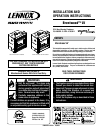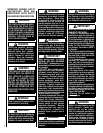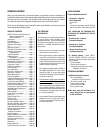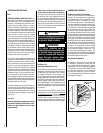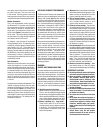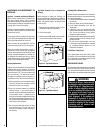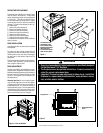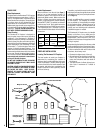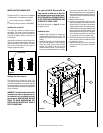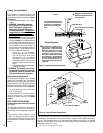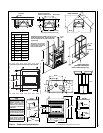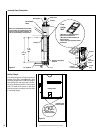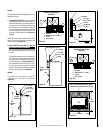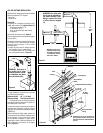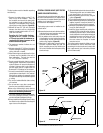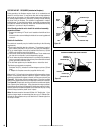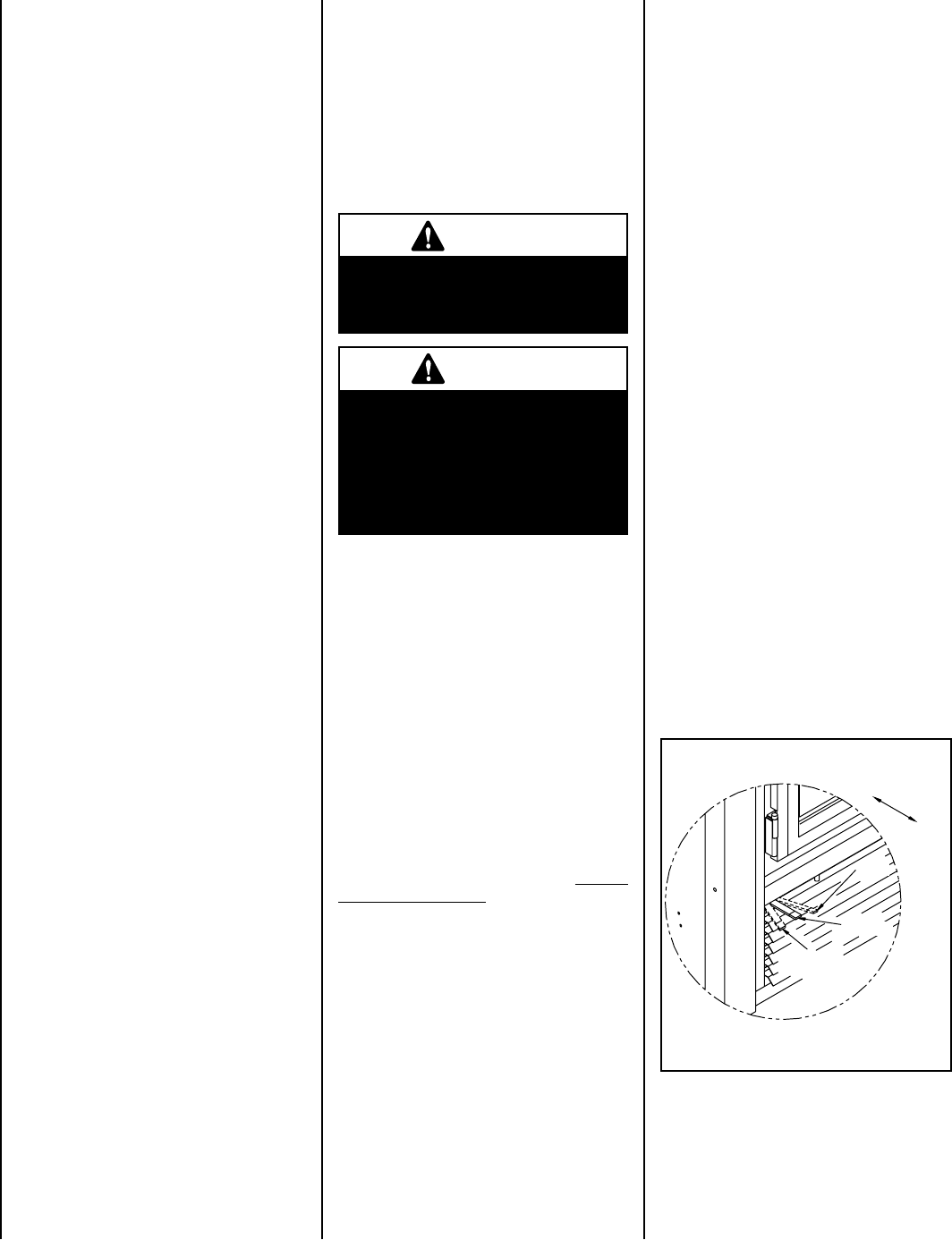
Building a Fire
(starting and maintaining a fire)
To start a fire, place several crumpled up balls of
newspaper in the firebox. Place small dry pieces
of kindling on top of the paper, criss-crossing
the kindling so that there are air spaces in be-
tween. Keep the fuel far back enough so that air
can get underneath. Open the air controls fully
and light the newspaper. Once the newspaper
and the kindling is well ignited, close the door.
Once the kindling fire is well established, cord
wood can be added (see Primary Air Combus-
tion Control section for proper operation of the
air controls).
The unit will burn best with 2-3 pieces of cord
wood spaced 1 to 2 inches apart and allowing
air to get under the fuel. Criss-crossing or ar-
ranging the fuel so that air can get underneath,
will help the fire to get started easily. The unit
should be operated with the air control fully open
long enough to get the cord wood well ignited.
Figure 1
Slow
Push to Close
Air Boost
Pull to
Open
Air Boost
Medium
Accelerated
WARNING
Be careful adding wood fuel to the
fire or handling fireplace tools such
as shovels, tongs or pokers.
WARNING
The bottom refractory can be
cracked by excessive abuse such
as tossing heavy logs onto the
grate or gouging with fireplace
tools. Exercise caution when
adding wood to your fireplace.
OPERATING THE FIREPLACE
Fuel
USE SOLID NATURAL WOOD FUEL ONLY. The
Brentwood™ LV fireplace is designed to work
best when fueled with dry seasoned natural
wood only. Hardwoods are preferred to soft-
woods since the energy content of wood is
relative to its density. Hardwoods will result in
a longer burning fire and less frequent refueling.
A moisture content of 15% to 20% (seasoned)
is recommended. Wood that has been cut and
split and let to dry under a cover for a period
of one year will usually meet that criteria. The
required drying time will vary depending on the
climate. Wood that is packed tight together will
take longer to dry. Seasoned wood is darker in
color than wet wood and will have visible cracks
in the grain on the ends. Excessively wet wood
will be difficult to burn and will result in lower
efficiency, increased creosoting and deposits on
the glass and in the chimney. Excessively dry
wood will burn well but will also have higher
emissions and shorter burning time.
Do not burn scrap or garbage, treated wood or
wood such as driftwood from the ocean which
has been exposed to salt or other chemicals.
Salt or chemicals can corrode the firebox and
chimney. Do not burn large amounts of paper,
cardboard, Christmas tree branches or building
construction materials. Intense firing with these
materials may overheat the fireplace, causing
damage to the unit, a fire or even possibly ignit-
ing a chimney fire if the chimney is creosoted.
Burning unapproved fuel, resulting in excessive
pollutants being emitted, may be prohibited and
subject to a fine or other penalty by the authority
having jurisdiction in your area.
Processed firelogs can be used. Although, do
not poke or stir the logs while they are burning.
Use only firelogs that have been evaluated for
the application of fireplace and refer to firelog
warnings and caution markings on packaging
prior to use.
First Fires
Before using the fireplace make sure to remove
the plastic wrapping and EPA label on door.
Remove any glue residue left by the label
using mild soap.
The first five or six fires should be small fires
of short duration (about 30 to 60 minutes).
This will help cure the refractory bricks. During
the first few fires of this appliance there may
be some odor and smoke due to the curing of
the paint, dust accumulation and burning off of
lubricants used in the manufacturing process. It
may set off a smoke alarm located in the same
room. For this reason the room should be well
ventilated for the first few fires.
COMBUSTION CONTROLS
Primary Air and Air Boost Controls
There is no flue damper in the Brentwood LV
fireplace. As is common with air tight stoves,
the combustion air control sets the flow of air
entering the firebox. This allows for a more
precise control of the fire. The combustion air
control is located below the door on the left side.
The main source of air (primary air) entering
the firebox can be diminished by moving the
air combustion control from left to right. The
primary air is fully opened when the air control
is completely moved to the left. The air control
device can also be used to add an extra boost of
air especially during fire start up and reloading
of the unit. Pulling the air combustion control
will induce an air boost at the base of the fire
allowing an easier fire start up. When the fire is
well established, the control can be pushed in
to shut down the air boost allowing for a longer
burn time. The combustion air control should
be in the closed position (primary air and air
boost) when the fireplace is not in use. This
will minimize air leakage up the chimney. The
combustion air control should be opened before
opening the door to minimize the possibility of
back draft coming into the room.
Accelerated Combustion
The maximum heat output for the Brentwood
LV fireplace is achieved by burning with the
door closed and the combustion air opened
and pulled out. By this method, the Brentwood
LV fireplace can produce up to 55,000 BTU of
heat per hour. However, it will be necessary
to reload with wood every one or two hours.
This is the least efficient method of burning the
Brentwood LV fireplace.
NOTE: DIAGRAMS & ILLUSTRATIONS ARE NOT TO SCALE.
4



